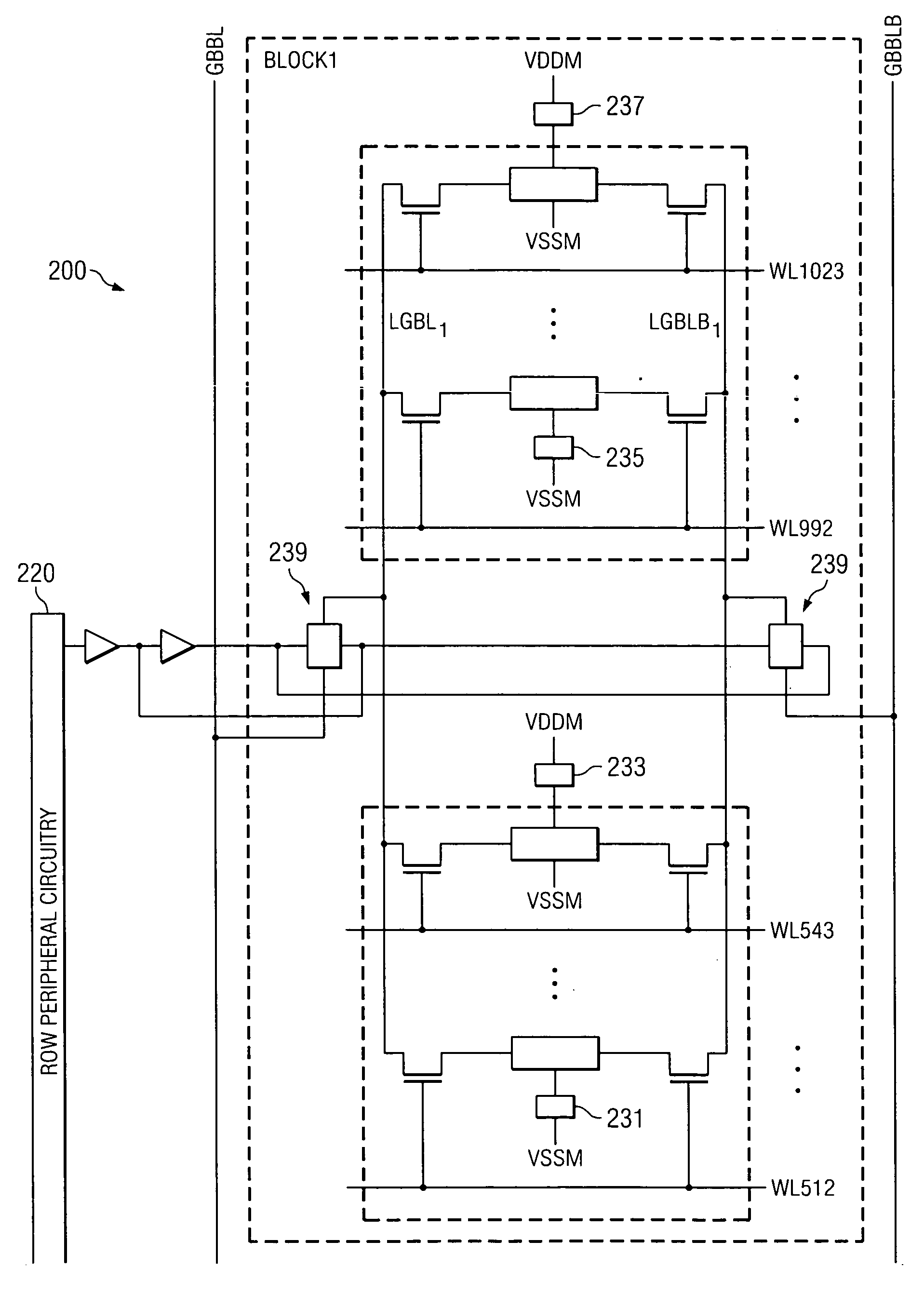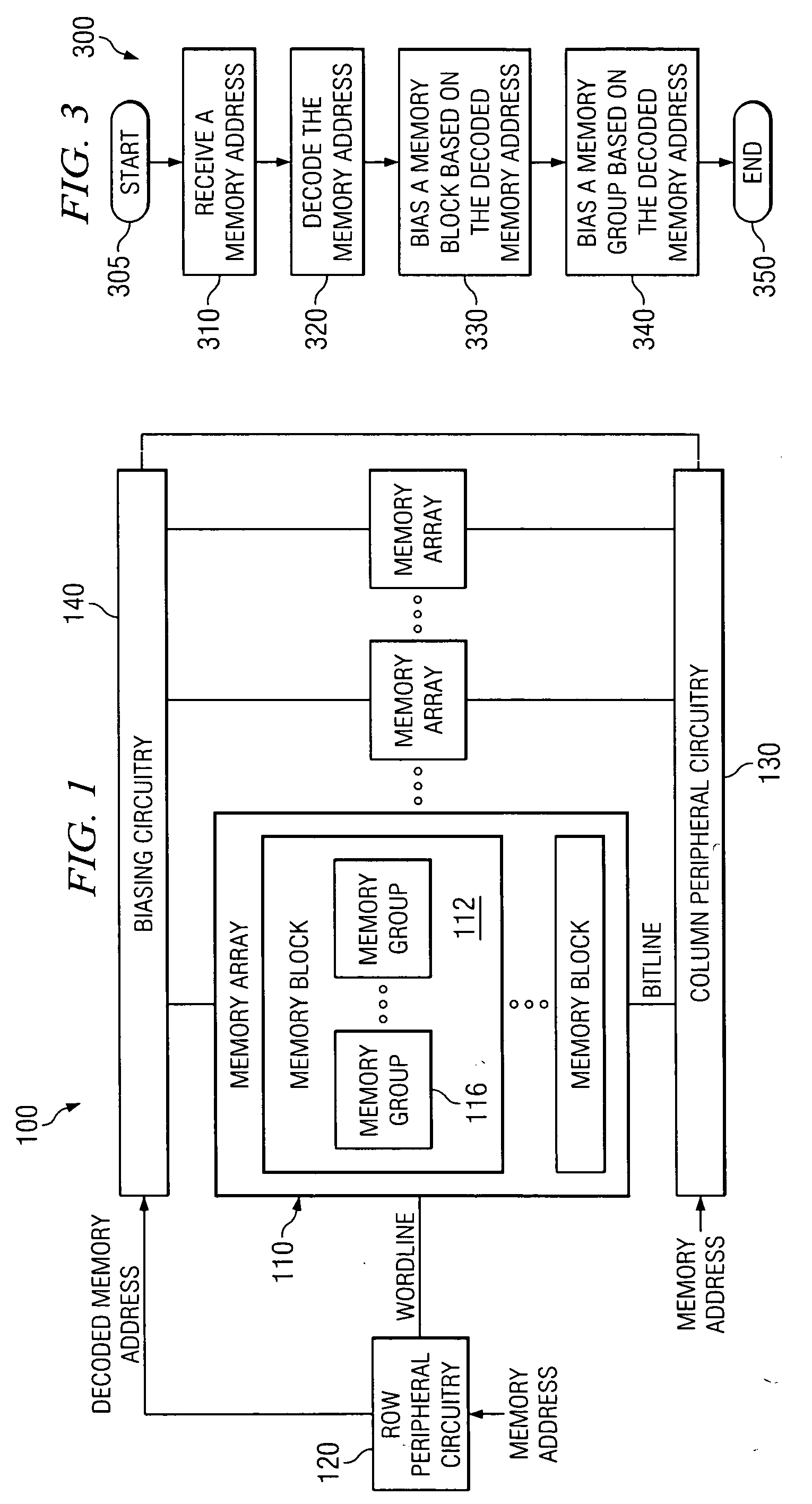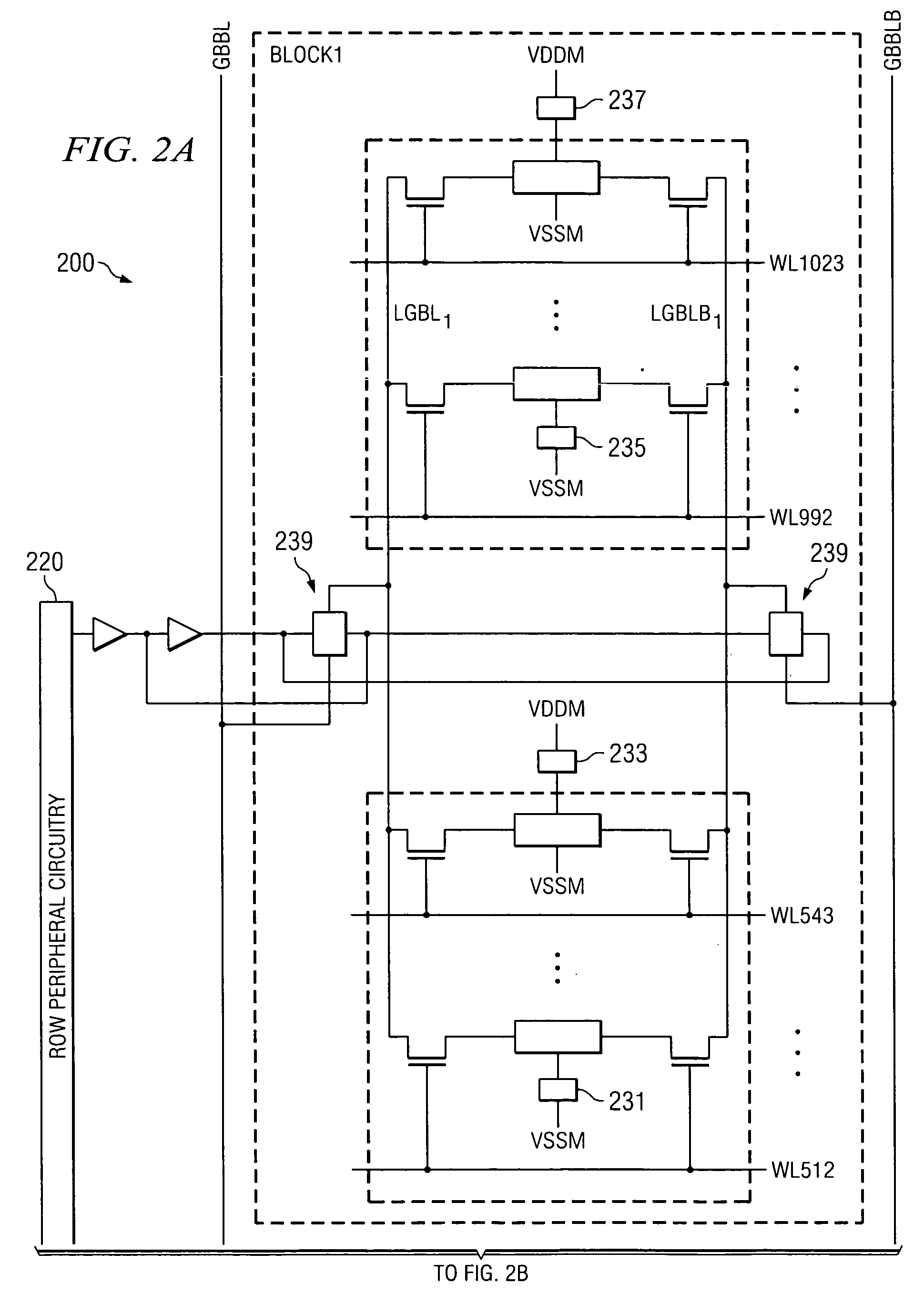High performance, low leakage SRAM device and a method of placing a portion of memory cells of an SRAM device in an active mode
a memory cell and active mode technology, applied in static storage, digital storage, instruments, etc., can solve the problems of inability to write, low leakage rate, and inability to access data of a sram device in a standby mode, so as to improve the access time of the sram, reduce the capacitance of the bitline, and high performance access
- Summary
- Abstract
- Description
- Claims
- Application Information
AI Technical Summary
Benefits of technology
Problems solved by technology
Method used
Image
Examples
Embodiment Construction
[0018] Referring initially to FIG. 1, illustrated is a block diagram of an embodiment of an SRAM device, generally designated 100, constructed according to the principles of the present invention. The SRAM device 100 includes a plurality of memory arrays, row peripheral circuitry 120, main column peripheral circuitry 130 and biasing circuitry 140. One memory array of the plurality of memory arrays, memory array 110, is selected to represent each of the plurality of memory arrays.
[0019] The memory array 110 includes multiple memory cells organized in a matrix of columns and rows. The memory cells of the memory array 110 are configured into sets denoted as memory blocks and represented by memory block 112. Additionally, the memory cells in memory block 112 are configured into subsets denoted as memory groups and represented by memory group 116. One skilled in the art will understand that the memory array 110, the memory block 112 or the memory group 116 may be considered as a set of ...
PUM
 Login to View More
Login to View More Abstract
Description
Claims
Application Information
 Login to View More
Login to View More - R&D
- Intellectual Property
- Life Sciences
- Materials
- Tech Scout
- Unparalleled Data Quality
- Higher Quality Content
- 60% Fewer Hallucinations
Browse by: Latest US Patents, China's latest patents, Technical Efficacy Thesaurus, Application Domain, Technology Topic, Popular Technical Reports.
© 2025 PatSnap. All rights reserved.Legal|Privacy policy|Modern Slavery Act Transparency Statement|Sitemap|About US| Contact US: help@patsnap.com



